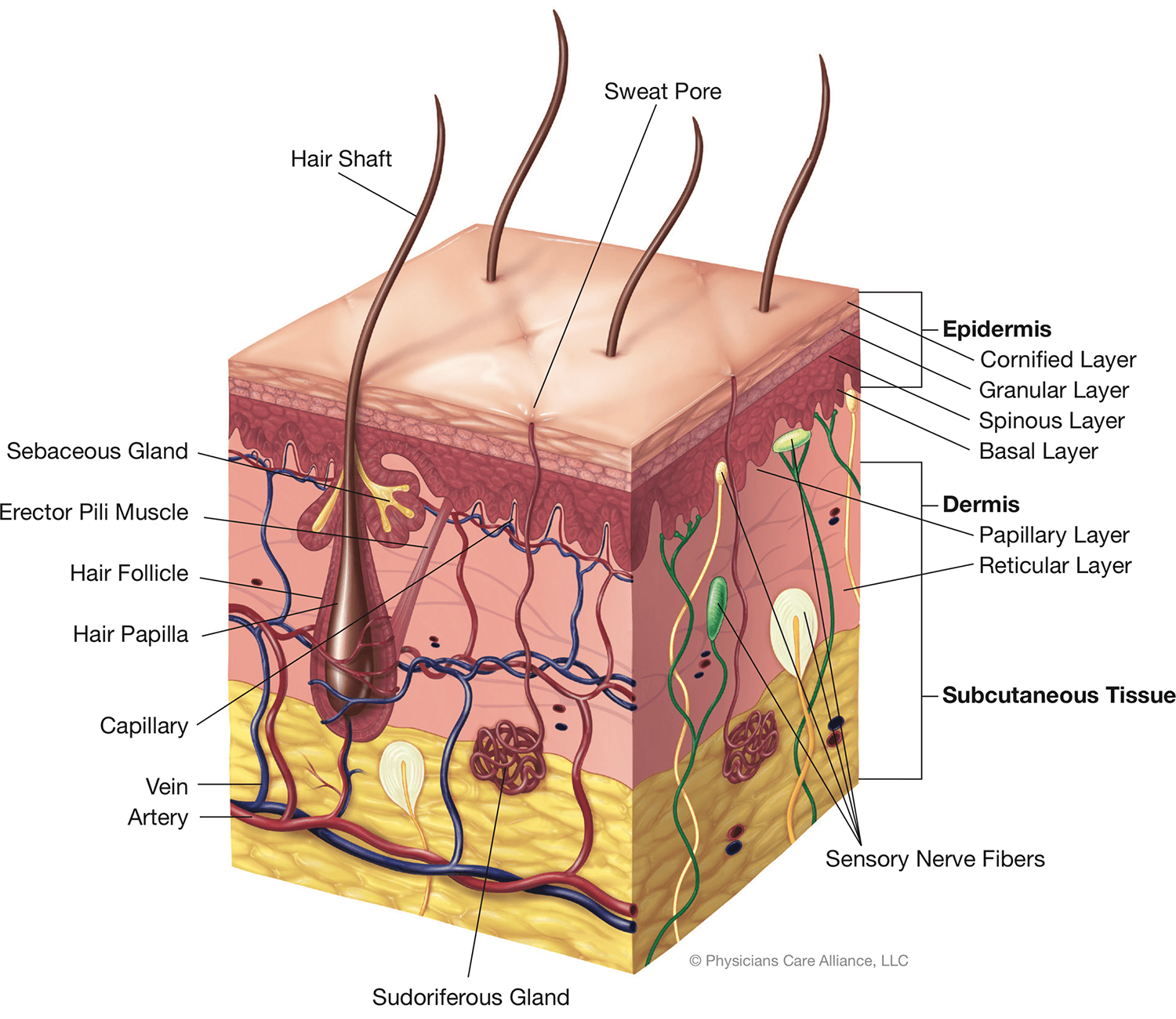The dermis is the layer lying underneath the epidermis, consisting of highly sensitive and vascular connective tissue, collagen, elastin, and reticular fibers. It consists of two layers: the papillary layer and the reticular layer.
Papillary layer – is composed of small conical elevations called “papillae,” which push up into the epidermis and contain blood vessels and nerve fibers called tactile corpuscles. The epidermis receives its nourishment through this blood supply. Through these nerve fibers, we gain our sense of touch.
Reticular layer – contains the extracellular matrix (ECM), blood vessels, lymph nodes, nerves, sebaceous and sudoriferous glands, and fibrous and elastic tissue.
Extracellular matrix (ECM) – is a complex group of biomolecules designed to support and protect the cells. The ECM consists of structural proteins, such as collagen; adhesive proteins, such as fibronectin; glycosaminoglycans (GAG), such as hyaluronic acid; and elastin. A healthy ECM provides the skin with a firm and youthful appearance; however, environmentally-induced enzymes in the skin known as matrix metalloproteinase (MMP) break down and recycle proteins and can prematurely degrade this structure.
Matrix metalloproteinase (MMP) – are enzymes such as collagenase and elastase, and are responsible for the breakdown and recycling of proteins like collagen and elastin. MMP are beneficial to a certain extent and fight environmental factors such as pollution and other free radicals. When too many of these enzymes are present, the result is an unwanted breakdown of healthy proteins and extrinsic aging.
Matrix metalloproteinase inhibitors (MMPi) – are ingredients that maintain the correct balance within the extracellular matrix by inhibiting the activity of the enzymes responsible for the breakdown of its structure (MMP). Examples of common MMPi are antioxidants such as resveratrol, epigallocatechin gallate (EGCG), and vitamins C and E.
Sebaceous glands – are small oil-producing glands that consist of little sacs whose ducts open into the hair follicles. They secrete sebum, which lubricates and prevents moisture loss from the skin. These glands are found in all parts of the body with the exception of the palms of the hands and soles of the feet. These glands respond to androgen hormones (male hormones) and increase the production of sebum during adolescence.
Sudoriferous glands – are tubular glands that are abundant in most parts of the body, but are more predominant on the palms, soles, forehead, and underarms. The sudoriferous glands regulate body temperature and help eliminate waste products from the body. There are two types of sudoriferous glands found in the skin: eccrine and apocrine glands.
- Eccrine glands – secrete a watery sweat that is a mixture of 99% water and 1% salts and fats. They are not associated with the hair follicle and respond to temperature to keep the body cool.
- Apocrine glands – become active at puberty. These glands are larger and deeper than eccrine glands and are associated with the hair follicle. Apocrine glands produce thicker secretions than eccrine glands and contain pheromones, which emit odor.


